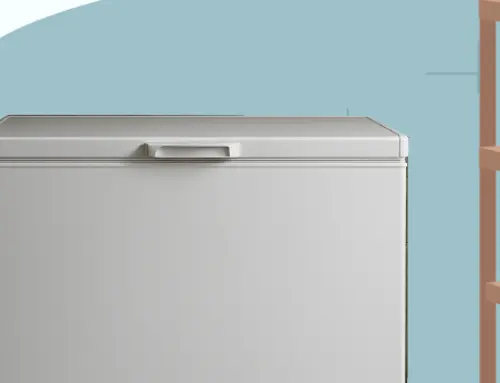What is Green Energy? Sources, Costs, Examples Explained
by Tyler Castle
9.6 min read

Green energy and renewable energy: With more attention focused on the environment, you’ve probably heard these terms used before, possibly even interchangeably, but do they really mean the same thing? The short answer is no. Though similar, the two are unique concepts with subtle differences. And we’re here to help you tell them apart.
Read on to find out more about green energy, how it differs from renewable energy, and its environmental (and economic) benefits.
- What is Green Energy?
- Why Green Energy Matters
- Green Energy vs. Renewable Energy: What’s the Difference?
- The 6 Types of Green Energy (And Which Is Most Efficient)
- Benefits of Green Energy
- What Does Green Energy Cost?
- Green Energy and Fossil Fuels
- Green Energy FAQs
- Why Santanna?
What is Green Energy?
First things first, what does the term “green energy” actually mean? According to the United States Environmental Protection Agency (EPA), green energy — or green power, as the organization refers to it — is a subset of renewable energy and is defined as “electricity produced from solar, wind, geothermal, biogas, eligible biomass, and low-impact small hydroelectric sources.” In other words, green power is a type of energy that offers the most environmental benefits with the least impact.
Why Green Energy Matters
With one of the hottest months in recorded history in the books — one that’s an “indicator of a planet that will continue to warm as long as we burn fossil fuels”, according to Michael Mann, a climate scientist at the University of Pennsylvania, taking measures to combat climate change is more important than ever. One of the ways that you can help reverse this trend at home is making the switch to either green or renewable energy sources. By transitioning to renewable power (including green power), you can reduce the size of your carbon footprint by up to 2.5 tons annually.
Green Energy vs. Renewable Energy: What’s the Difference?
Now that you have a better understanding of what green energy is and why it matters, let’s take a look at how it compares to renewable energy — the type it’s most often confused for.
Renewable energy comes from natural sources that can independently replenish without running out, which at surface level sounds very similar to the definition of green energy. However there is a difference. Green power is a subset of renewable energy that includes resources that offer the greatest environmental benefits with the least impact. Furthermore, not all renewable energy qualifies as green energy; this is because some of the technologies used to harness it are associated with higher environmental trade-offs, such as those associated with large hydropower plants for example.
In addition to the six types of green energy (solar, wind, geothermal, biogas, eligible biomass, and low-impact hydropower), examples of renewable energy sources include large hydropower and municipal solid waste.
The 6 Types of Green Energy (And Which Is Most Efficient)
When it comes to the six varieties of energy that the EPA identifies as green power sources, each is unique in its benefits and usage rates.
Solar
This energy type converts sunlight into electrical power through the use of specialized solar panels (this is the most common method) or mirrors that harness radiation from the sun’s rays. If you’re looking to generate your own earth-friendly power, installing solar panels is one of the most popular ways to accomplish this goal — and save on utility bills in the process.
Wind
Wind power is generated by wind farms, which are on- or off-shore groups of turbines that convert the wind’s kinetic energy into electricity. While it is possible to set up a wind turbine on your property, residential wind energy requires that specific conditions are met for installation and are only a good investment in certain circumstances.
Biomass
Biomass energy is created from plant and animal sources — think manure, wood and wood byproducts, and agricultural crop waste. To generate power, these materials can either be burned outright or used to make different gas- or liquid-based fuels.
Biogas
Biogas is derived from the decomposition of certain biomasses — specifically landfill waste, sewage, and animal manure. The byproduct of this process is rich in both methane, the main component of natural gas, and carbon dioxide and can be burned in its raw state for fuel. Additionally, biogas may also undergo treatments that allow for its use as a natural gas substitute.
Geothermal
Geothermal energy is the term used to describe heat energy that’s generated by the earth. Power is generated by reservoirs of hot water (either naturally occurring or manmade) that are located underground at depths ranging from a couple feet to a few miles. Thinking about replacing your furnace or air conditioning system? Geothermal heat pumps are an environmentally friendly way of heating and cooling your home.
Hydropower
This energy source relies on moving water to generate power. While large dams and similarly-sized hydropower plants tend to have accompanying environmental trade-offs, the impact of smaller facilities such as damless or run-of-the-river operations is minimal. If you live near a source of running water, creating a micro-hydropower system at home is possible.
As for which green energy source is best in terms of efficiency, the answer is: wind. Thanks in part to its operations and maintenance costs, fuel costs, and level of environmental impact, wind-based power consistently earns top efficiency ratings.
Benefits of Green Energy
Making the switch to green energy comes with a list of bonuses that go beyond the environmental benefits. In addition to reducing carbon emissions and helping to prevent further damage to the planet, relying on green energy can also:
- Create new jobs. The World Resources Institute projects that renewable energy technologies could be responsible for creating up to 5.7 million new jobs by 2035.
- Improve public health. A report from Harvard’s Clean Energy Futures project estimates that a decrease in the air pollutants associated with fossil fuels could save hundreds of thousands of lives.
- Stabilize energy prices. While fossil fuel prices are notoriously volatile, renewable energy sources are reliable and more or less predictable.
What Does Green Energy Cost?
While exact costs differ for each green energy source (and tend to fluctuate over time), the general trend is that green energy prices are falling year over year. For instance, in 2021, the cost of both solar and on-shore wind dropped by 16 percent and 13 percent respectively. What’s more is that both energy types are consistently cheaper than their fossil fuel-based counterparts.
But is the trend expected to continue? While the International Energy Agency (IEA) recently observed a cost increase in certain renewable sources, the organization also notes that these increases were outpaced by rises in the price of fossil fuels such as coal, oil and natural gas — thus enhancing renewable energy’s overall competitiveness.
Green Energy and Fossil Fuels
Despite its many environmental and economic benefits, the question remains: Can green energy replace fossil fuels? While reliance on traditional fuel sources such as coal, oil, and natural gas remains high, 69 percent of the U.S. population agrees that the U.S. should prioritize renewable energy sources. What’s more, a 2022 study from Stanford University posits that even though it would cost an estimated $61.5 trillion to ramp up worldwide production of wind, solar, and hydroelectric power to a level that would render fossil fuels unnecessary, countries would recoup those costs in roughly five years.
Though the likelihood of abandoning fossil fuels on such a large scale remains low for the time being, the growing renewable energy industry suggests that a more environmentally-friendly future is possible.
Green Energy FAQs
What is green energy?
“Green energy” (or “green power”) is a term used to describe those renewable energy sources that offer the most environmental benefits with the least impact. Examples of green energy include biogas, biomass, geothermal, hydropower, solar, and wind.
What are the benefits of green energy?
In addition to offering numerous benefits for the environment (such as reduced carbon emissions and preventing further damage to the planet), green and renewable energy can lead to job creation, improved public health, and stabilized energy prices.
Which type of green energy is best?
All green energy types have unique merits, which means that there’s no one “best” option. However, wind is often considered to be the most efficient.
Are green energy and renewable energy the same thing?
Yes and no — the answer depends on how you look at it. The relationship between green and renewable energy can be described in the following way: All forms of green energy are renewable, but not all renewable energy sources are green. This is because some kinds of renewable energy come with environmental trade-offs.
Why is green energy important?
Green energy is important for both its environmental and economic benefits. In terms of environmental impacts, green energy produces limited (and sometimes zero) greenhouse gas emissions, thus helping combat air pollution. On the economic side, it leads to diversified energy options and a reduced reliance on fuel imports.
Is green energy right for me?
Yes! Green energy is a good investment for anyone looking to shrink the size of their carbon footprint and save on their energy bills. However, the energy source that’s the best fit will depend on circumstances such as your location, differing local regulations, or the types of earth-friendly energy options offered by your energy provider.
Do I need special equipment to use green energy in my home?
Not necessarily. If your local energy provider offers green options or if you source supplementary green energy from a third party provider, then you may be able to continue using your home’s existing equipment.
On the other hand, endeavors such as creating your own micro-hydropower system or a residential wind or solar farm, for example, will require investing in specialized equipment.
What’s the difference between green energy and earth-friendly energy?
“Earth-friendly energy” is a way to refer to energy programs that offset environmental and climate impacts through solutions such as carbon credits and reforestation. Earth friendly is not a synonym for green energy. It’s important to understand this difference when researching a utility company’s eco-conscious energy options. “Greenwashing,” or the practice of referring to power sources as “green” when they don’t actually fall into that category is a common-enough occurrence in the industry that it’s good to pay extra close attention to how a company talks about their energy options.
At Santanna Energy services, we’re proud to offer energy plans that match 100% of your usage with renewable energy credits.
Make the Switch to Earth-Friendly Energy With Santanna
As the state of our environment changes, focusing on renewable energy sources is becoming more important than ever. Here at Santanna Energy Services, we’re committed to helping our customers make the change that helps things change. If you’re thinking about making the switch to renewable energy, we offer earth-friendly electricity options that can reduce your carbon footprint and help the environment remain carbon neutral.
Santanna Energy Services is a supplier of renewable energy solutions in the United States, providing services to Illinois, Indiana, Pennsylvania, Michigan, and Ohio. We provide a wide range of energy services and products to meet the needs of both residential and small business customers. Our mission is to provide innovative and cost-effective energy solutions that will help our customers achieve their energy goals. With over 35 years of experience, we are committed to creating life-long relationships by providing quality service to customers, communities, and employees.
Tyler is an experienced energy professional, having worked for Santanna Energy Services, for the past four years. He is passionate about renewable energy and believes that diversifying the energy grid is the key to a sustainable future. Tyler is dedicated to supplying consumers with the best possible energy solutions and works diligently to make sure that Santanna can deliver the highest quality service.







